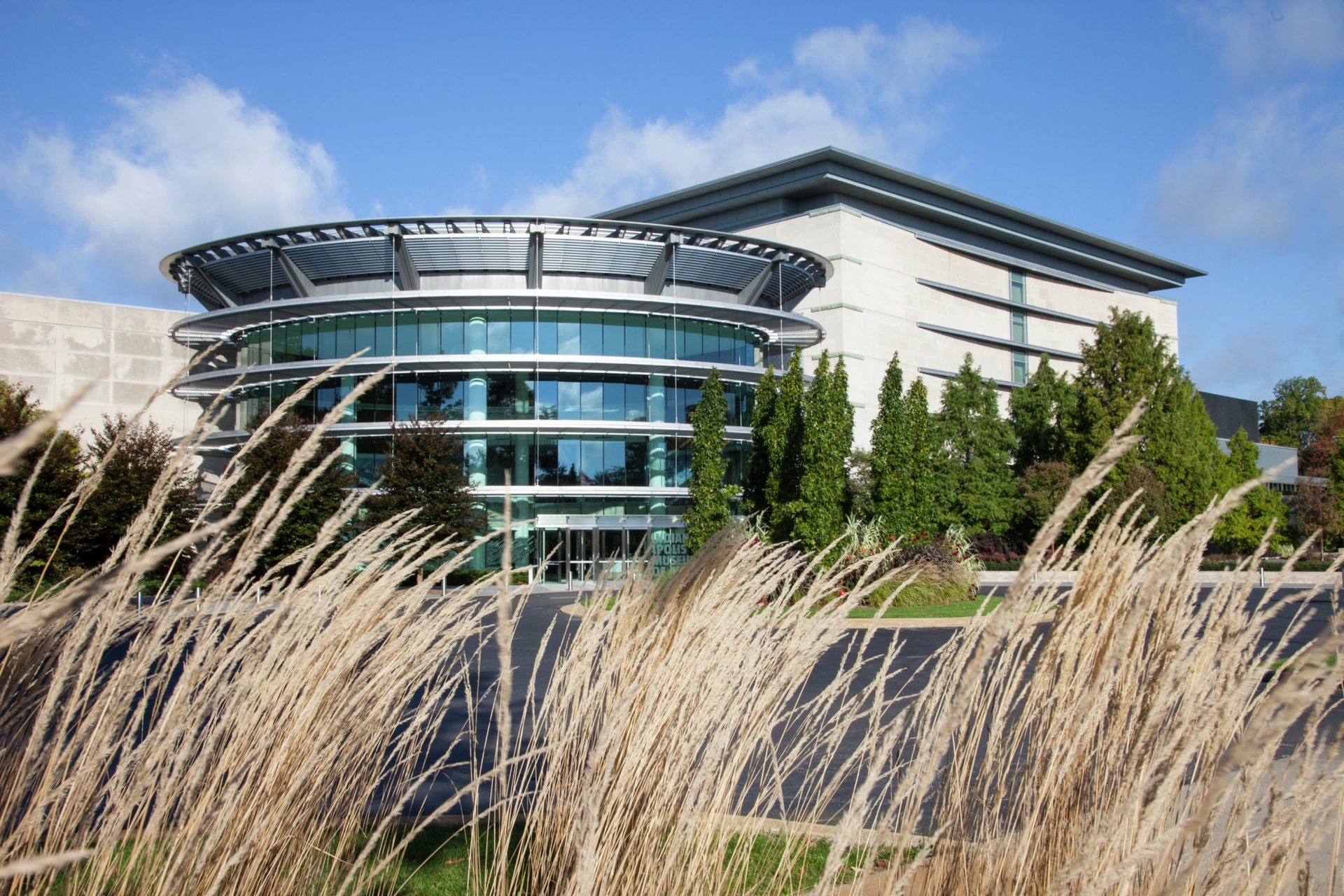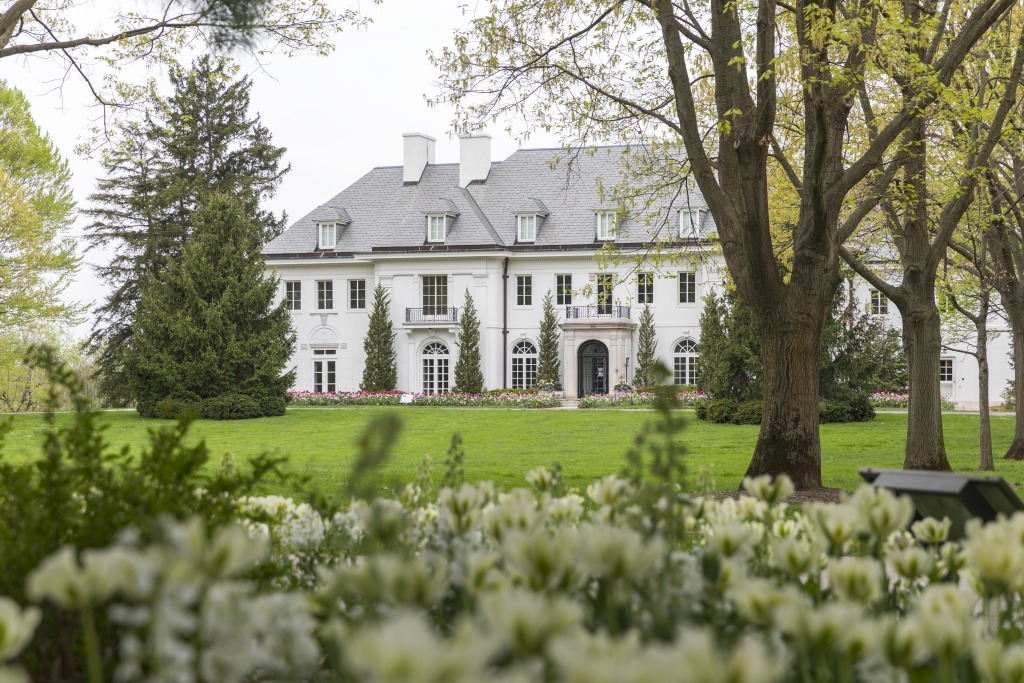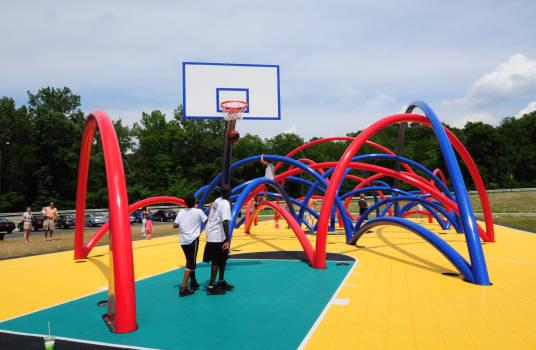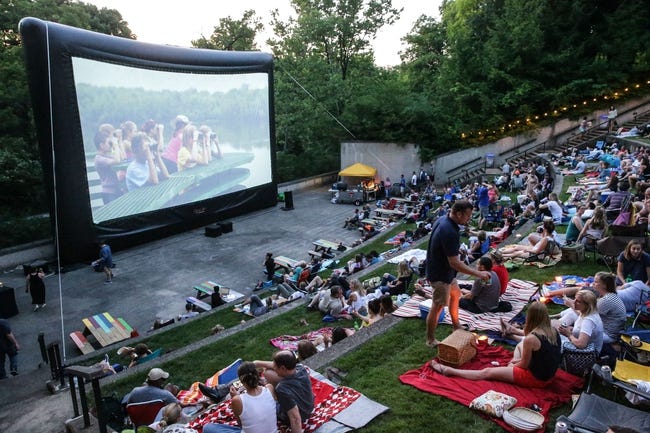Newfields is a 152-acre campus that contains the Indianapolis Museum of Art (IMA), Oldfields, and 100 Acres Park. One of the oldest art museums in the United States, Newfields got its start in the early 1880s as the .

In 1883, held a meeting in her home to discuss the organization of a society for the study and promotion of art. By October 11, 1883, the Art Association of Indianapolis was officially incorporated. The association’s goal was to establish a permanent art museum and art school in Indianapolis. The first step in reaching this goal took place in 1895 when John Herron bequeathed $225,000 to the association. Herron stipulated that the money be used to build a museum and art school bearing his name.
The John Herron Art Institute opened temporarily in 1902 at the Tinker House (or Talbot Place) on 16th and Pennsylvania streets, once the studio of . From 1905 to 1906, the institute’s permanent home, designed by Arthur Bohn, of the noted Indianapolis architecture firm was constructed on the site. Two years later, a new art school building was opened just north of the museum building. The museum and art school continued to expand, and the institute erected a new building in 1929 to house the .
The first professional director of the John Herron Art Museum was , who began his 36 years with the museum in 1929. Peat had served as director of the Akron Art Institute, in Akron, Ohio, before moving to Indianapolis. During his tenure, the institution increased its holdings through purchases, gifts, bequests, and permanent loans. By 1942, the museum had acquired 350 paintings by 260 artists.
In 1965, Peat retired, and Indianapolis native Carl J. Weinhardt Jr. became the new director of the museum, after serving as the director of the Gallery of Modern Art in New York City. The following year, the children of Mr. and Mrs. , and Josiah K. Lilly III, donated their parents’ estate, Oldfields, to the Art Association. For the next three years, the Art Association worked to convert the estate into a new home for the art museum. The Lilly mansion became Lilly Pavilion of Decorative Arts, and the construction of new exhibition buildings on the Oldfields estate began.

The John Herron Art Museum took a new name when it moved into these new quarters at 1200 West 38th Street in 1969, Indianapolis Museum of Art. By this time, the Herron School of Art had lost its accreditation, prompting the board to transfer the school to Indiana University on the IUPUI campus. The museum’s name change signified the divergence of the Herron School of Art and the new museum of art.
In the years following the move, the IMA continued to expand. It opened the Krannert Pavilion in 1970, the Clowes Pavilion in 1972, and the Showalter Pavilion in 1973. When Weinhardt resigned as director of the IMA in 1974, he left a flourishing museum to his successor, Robert A. Yassin, who had been an administrator and acting director of the University of Michigan Museum of Art and then a chief curator at IMA before being appointed the institution’s director.
Yassin enlarged the IMA’s curatorial department to keep pace with the expanding facility. In 1985, plans for yet another expansion were announced. The Mary Fendrich Hulman Charitable Trust made a gift of $3.5 million to the IMA for a new four-story Hulman Pavilion. When this pavilion opened on October 14, 1990, it increased the museum’s exhibition space by about 75 percent.
Bret Waller, who like his predecessor had worked at the University of Michigan Museum of Art, became IMA director in 1990. He oversaw the museum’s substantial collection of American, Asian, African, and Pre-Columbian art, including Old Master, Classical, and Renaissance paintings, American and European furniture, silver, textiles, and special exhibitions. More important works were added to the collection in 1997 and 1999 including 101 works by Gauguin and the School of Pont-Aven and 100 works from Rembrandt, Rubens, El Greco, Cranach, Jan Breugal, Constable, Monet, and other European masters.
In addition to exhibition space, the IMA also housed the Alliance Museum Shop, the Alliance Rental and Sales Gallery, and the Indianapolis . The outdoor Concert Terrace was the site of summer concerts, films, and special programs. The IMA greenhouse cultivated and sold flowers, herbs, and plants. The Lillys’ recreation house became the Garden on the Green Restaurant, and Newfields, a second Lilly residence on the estate, became the location of the IMA Alliance’s Better-Than-New Shop.
In 1999, IMA revealed a new campus master plan which included a 100-acre art and nature park. By 2002, it broke ground for the expansion of the museum. That same year restoration was completed on Oldfields–Lilly House & Gardens. The expanded campus opened to the public on May 5, 2005, featuring the new Efroymson Family Entrance Pavilion, Wood Gallery Pavilion, and Deer Zink Special Events Pavilion.

Development on the art and nature park did not begin until 2004 when Mississippi landscape architect Edward Blake, internationally known for his ecological planning and design, and architect Marlon Blackwell, a University of Arkansas landscape architecture professor, were selected to design the park. Funds to start work on the park, an $11 million grant from the , came in July of 2006.
Maxwell L. Anderson, who served as IMA director from 2006 to 2011, came to IMA following being the director of the Whitney Museum of Art and serving as president of the Association of Art Museum Directors. He worked to implement policies that provided transparency in museum practices, including dashboards that revealed museum performance and rationale for deaccessioning artworks. Anderson tried to reach the surrounding community by developing relationships with church congregations in the area like . He lunched regularly with the church’s pastor and invited its members to visit IMA galleries and grounds. As IMA director, Anderson also championed freedom of expression for artists in Indiana.

In 2009, the IMA expanded into Columbus, Indiana, after the Miller family donated the Miller House and Garden. The historic house was opened to the public two years later. IMA also received the National Medal for Museum and Library Service, which is the nation’s highest honor for museums and libraries in 2009, and the Virginia B. Fairbanks Art & Nature Park: 100 Acres opened in 2010.
In 2012, Charles Venable became IMA director after spearheading a major renovation and expansion campaign as director of the Speed Museum of Art in Louisville. Under Venable’s leadership, the IMA entered new territory. In 2015, it became the first art museum in the United States to open a preschool. It achieved this by partnering with St. Mary’s Child Center. But IMA also abandoned its free admission policy in 2015 and gated its 40-acre garden. Admission fees climbed to nearly $20.
By 2017, the IMA was part of a sprawling campus. which included the museum, Fairbanks Park, The Garden, Lilly House, the Elder Greenhouse, and the Miller House in Columbus. In an effort to unify each of these features, the IMA gave the entire campus a name, Newfields. The decision to change the name to Newfields and to add a number of features considered unorthodox in the world of art museums, including a “crowd-pleasing holiday festival called Winterlights, a mini-golf course, and a pumpkins show,” have been controversial. Critics of Venable’s policies claimed that he was “dumbing down the museum.” In a article, Kriston Capps called him out for de-emphasizing IMA’s significant modern art, Asian artifact, and other collections “in favor of its grounds.” Moreover, while the special festivals were popular, the high admission fees led to an overall drop in attendance numbers.
Newfields came under attack in 2020 for what its critics characterized as a lack of diversity and racism. Early in 2021, a job posting for director mentioned the desire for a more diverse audience but also included language that Newfields sought candidates who could maintain its “traditional, core, white art audience.” The ad led to a widespread public concern that attracted national news coverage. The institution’s board of directors pledged to make the changes necessary to improve Newfields’ culture and to make it “diverse, equitable, accessible and inclusive.”
Beginning in January 2022, Newfields began unveiling those changes. Abandoning traditional art history approaches, the permanent galleries underwent significant reorganization, which moving forward will follow topical content and themes covering 4,000 years and four continents. Following a multi-year renovation, the Clowes Pavillion reopened in March 2022 with nearly 100 objects on view and interpretations that reveal significant social and historical themes. In May 2022, Newfields announced the appointment of its first African American, Pierce Burnette, to the position of CEO. Burnette, originally from Cleveland, came to Newfields after serving as president of Huston-Tillotson University in Austin, Texas. In November 2023, she announced her departure from the organization, only 15 months after her appointment. Newfields provided no explanation for the move.

Help improve this entry
Contribute information, offer corrections, suggest images.
You can also recommend new entries related to this topic.